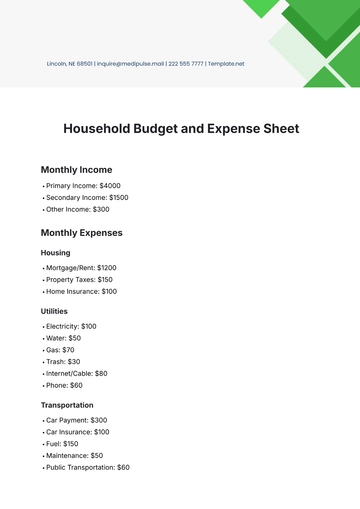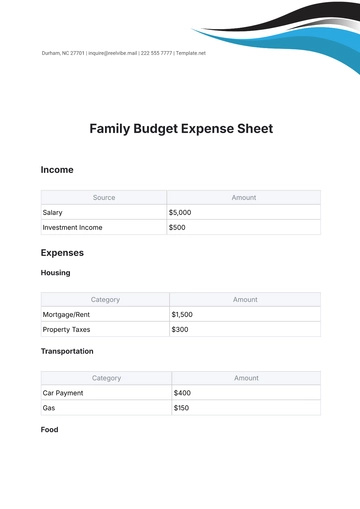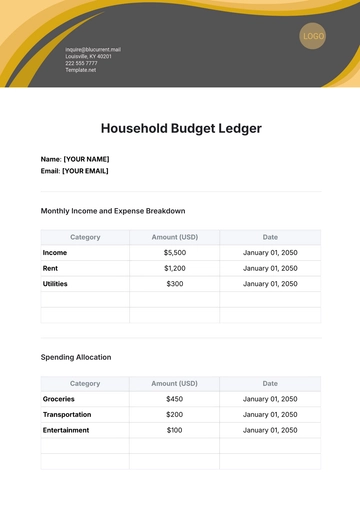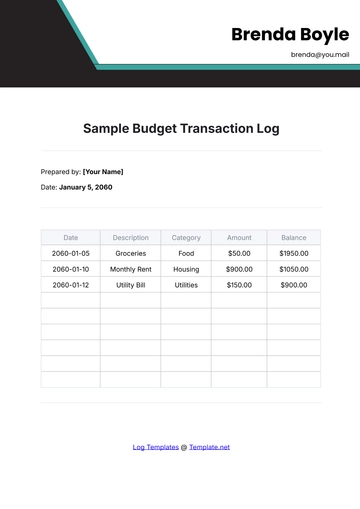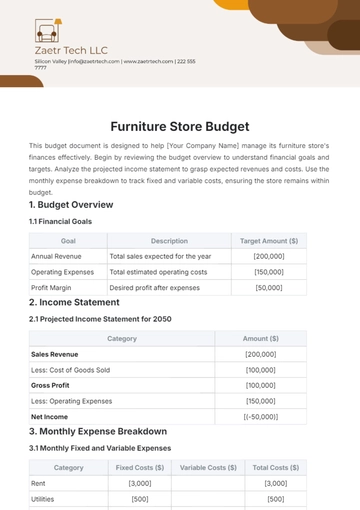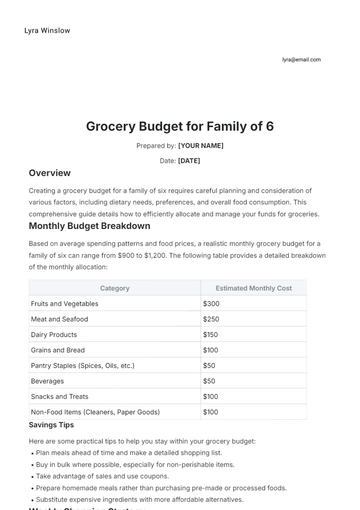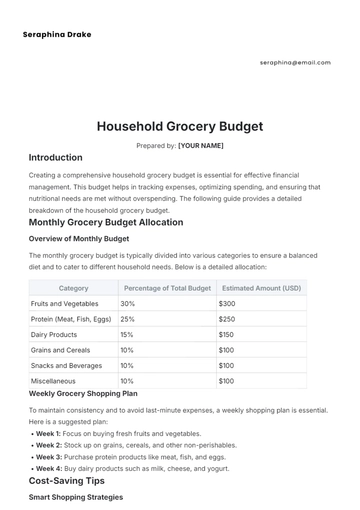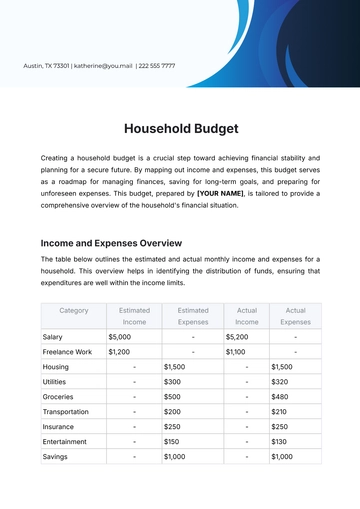Free Grocery Budget for Family of 3
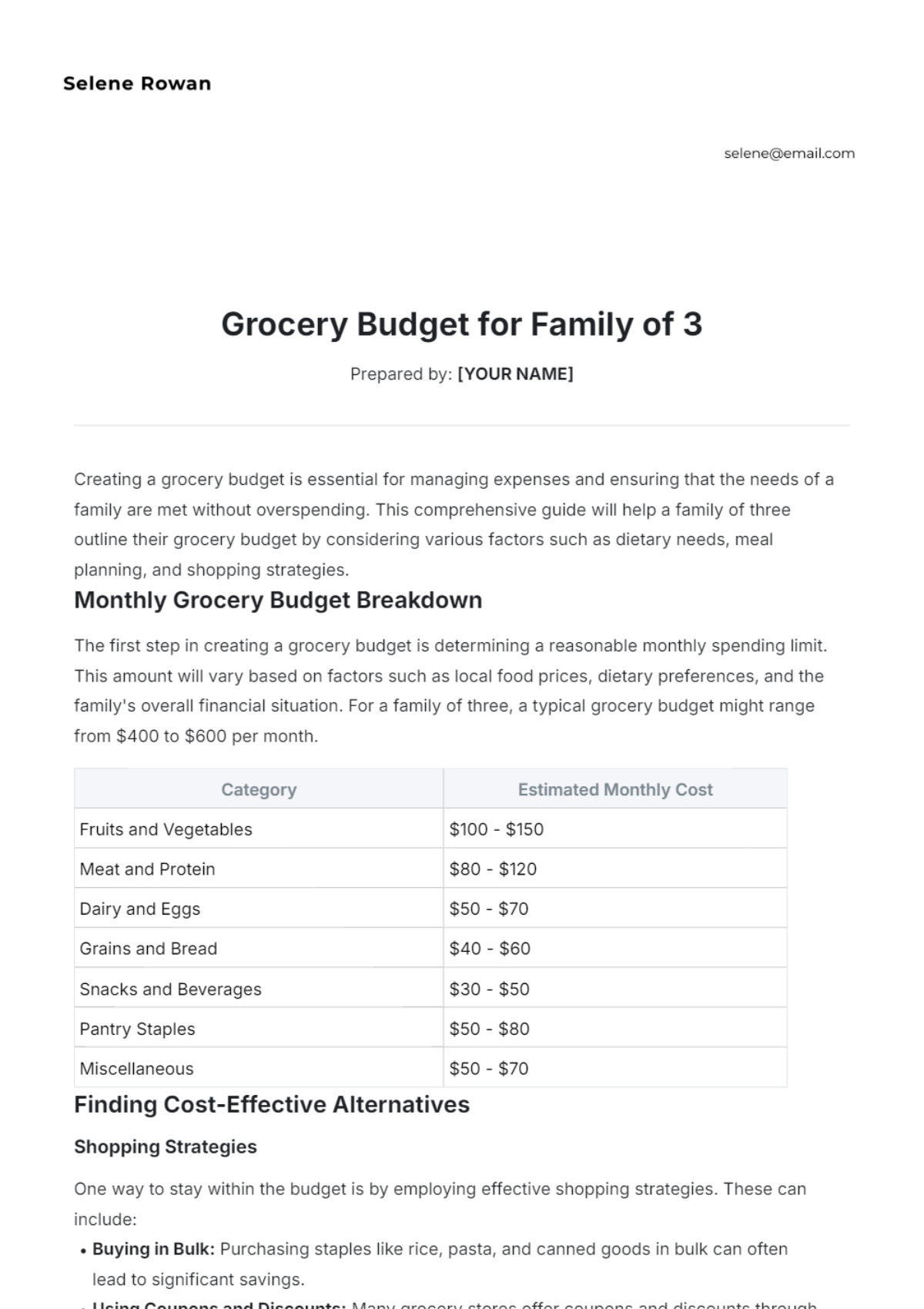
Prepared by: [YOUR NAME]
Creating a grocery budget is essential for managing expenses and ensuring that the needs of a family are met without overspending. This comprehensive guide will help a family of three outline their grocery budget by considering various factors such as dietary needs, meal planning, and shopping strategies.
Monthly Grocery Budget Breakdown
The first step in creating a grocery budget is determining a reasonable monthly spending limit. This amount will vary based on factors such as local food prices, dietary preferences, and the family's overall financial situation. For a family of three, a typical grocery budget might range from $400 to $600 per month.
Category | Estimated Monthly Cost |
|---|---|
Fruits and Vegetables | $100 - $150 |
Meat and Protein | $80 - $120 |
Dairy and Eggs | $50 - $70 |
Grains and Bread | $40 - $60 |
Snacks and Beverages | $30 - $50 |
Pantry Staples | $50 - $80 |
Miscellaneous | $50 - $70 |
Finding Cost-Effective Alternatives
Shopping Strategies
One way to stay within the budget is by employing effective shopping strategies. These can include:
Buying in Bulk: Purchasing staples like rice, pasta, and canned goods in bulk can often lead to significant savings.
Using Coupons and Discounts: Many grocery stores offer coupons and discounts through apps and loyalty programs.
Shopping Seasonally: Buying fruits and vegetables that are in season can be cheaper and fresher.
Generic Brands: Often, generic or store-brand products are of similar quality to name-brand items but are less expensive.
Meal Planning and Preparation
Another effective method for maintaining a grocery budget is through meal planning and preparation:
Weekly Meal Plans: Planning meals for the week can help in making efficient grocery lists and avoiding impulse purchases.
Batch Cooking: Preparing large batches of meals that can be stored and used throughout the week can save both time and money.
Leftovers Utilization: Creatively using leftovers for new meals can reduce food waste and grocery costs.
Tracking and Adjusting the Budget
Monitoring Expenses
Keeping track of spending is crucial for staying within the budget. Methods for monitoring grocery expenses include:
Receipts: Save and review grocery receipts to understand spending patterns.
Spreadsheets: Using a digital spreadsheet can help organize and keep track of monthly expenses.
Budgeting Apps: There are various apps available that can help track grocery spending and alert when approaching the budget limit.
Adjusting for Changes
It's important to be flexible and willing to adjust the grocery budget based on changing needs and circumstances. Factors like seasonal price changes, dietary adjustments, or economic conditions can all necessitate a review and alteration of the budget.
By employing these strategies and maintaining meticulous records, it is possible for a family of three to manage their grocery expenses effectively while ensuring a healthy and balanced diet.
- 100% Customizable, free editor
- Access 1 Million+ Templates, photo’s & graphics
- Download or share as a template
- Click and replace photos, graphics, text, backgrounds
- Resize, crop, AI write & more
- Access advanced editor
Managing a family of three’s grocery expenses is easier with this professionally crafted Grocery Budget for Family of 3 Template, exclusively offered by Template.net. Fully customizable and editable in our AI Editor Tool, the template provides flexibility in planning meals, setting spending limits, and monitoring grocery purchases week by week.
You may also like
- Budget Sheet
- Personal Budget
- Non Profit Budget
- Monthly Budget
- Project Budget
- HR Budget
- Company Budget
- Home Budget
- Weekly Budget
- College Budget
- Business Budget
- Construction Budget
- Small Business Budget
- Hotel Budget
- Annual Budget
- Home Renovation Budget
- Household Budget
- Student Budget
- Grocery Budget
- Marketing Budget
- Corporate Budget
- Startup Budget
- Manufacturing Budget
- Church Budget
- University Budget
- Annual Budget Plan
- Event Budget
- Operating Budget
- Travel Budget
- Food Budget
- IT and Software Budget
- School Budget
- Real Estate Budget
- Sales Budget
- Conference Budget
- Budget Finance
- Freelancer Budget
- Budget Advertising
